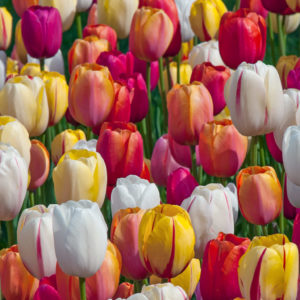ILT Vignocchi, Inc. Landscape Architects and Contractors…it’s part of our name because it’s that important. Landscape architects, landscape designers, landscape contractors, etc.; in case you were wondering what the difference is, read on…
While there may be a lot of overlap in these professions, the distinctions between them can make a world of difference in the planning, execution, and ultimate functionality of the outdoor spaces around your office building, campus, park, or HOA community. To fully understand the distinctions between landscape architects, landscape designers, and landscape contractors you need to look at both the technical and the functional aspects of the job.
A Landscape Architect must have a professional license issued by the registration board in the state in which they are performing work. In order to become licensed, they must have a degree in Landscape Architecture from an accredited school, some years of experience working for a licensed Landscape Architecture firm, and pass a qualifying exam. Landscape architects must adhere to a code of professional standards, actively participate in continuing education, and be current with state-of-the-art developments and trends in the landscape design field.

A rendered landscape plan by ILT Vignocchi
Landscape Designers may have varying levels of knowledge and expertise; however, they are not required to be licensed or certified, and are not regulated by the state. The “credential” for Landscape Designers has no legal bearing. While many Landscape Designers do have some level of professional training, they can call themselves such without any formal educational or experience requirements.
Finally, the Landscape Contractor is the team that is responsible for physically building, installing and maintaining the landscape conceived by the architect or designer. They are not government regulated beyond typical local business licensing requirements, and their insurance and liability coverages vary widely. Dependent upon their levels of expertise, they may be able to furnish and install the plant materials and build the structures, hardscapes, and water features called for in a given design.
Licensed Landscape Architects use their technical and artistic talents to create drawings, construction documents, and specifications that dictate the allocation, arrangement, and construction of planting schemes, land elements, water resources, and integrated structures. They usually work on larger scale projects such as commercial buildings, public parks, recreation facilities, institutional buildings, clubhouses, and multi-unit residential communities, and complex residential work. They are trained to document design concepts and plans on paper as a visual, graphic means of communicating their designs. This is especially important for complex projects that require permitting through city planning or building departments.
Because Landscape Architects have a responsibility for the health, safety, and welfare of the public in the work they do, they need to be licensed and are required to have professional liability insurance. By contrast Landscape Designers have no legal responsibility for the health, safety and welfare of the public, are not required to carry liability insurance, and are generally only allowed to design simple, single-family residential gardens.
Thoughtful landscape architecture adds value to a commercial development, public spaces, or an HOA community by considering both the aesthetic and practical aspects of the landscape. A landscape architect is conscious of the environmental issues with which today’s society is faced and has the expertise and training to plan around and manage the challenging issues on both commercial and residential sites, including:
- Use of space, traffic volume, and human impact on the landscape
- Appropriate plant selection and placement for long term impact
- Elevation, grading, and land usage
- Hardscape elements such as retaining walls and paving surfaces
- Water movement, Irrigation and drainage systems
- Outdoor structures
- Placement of recreational features, utilities, service lines, entryways, driveways, parking, etc.
At ILT Vignocchi, we are licensed, certified landscape architects, proficient in the “big picture” planning, design, construction, and maintenance of both public and private landscaped environments. We can help you develop your project from the “ground up”; providing initial concepts, finished designs, construction plans and specifications. Additionally, as contractors, we can build your outdoor environment to the exact specifications of the design, then maintain it to maximize your return on your investment.
Whether you are starting a project from the concept phase, interested in a large-scale renovation, or a simple redesign of a courtyard or monument sign, give us a call today and find out how ILT can help you.




